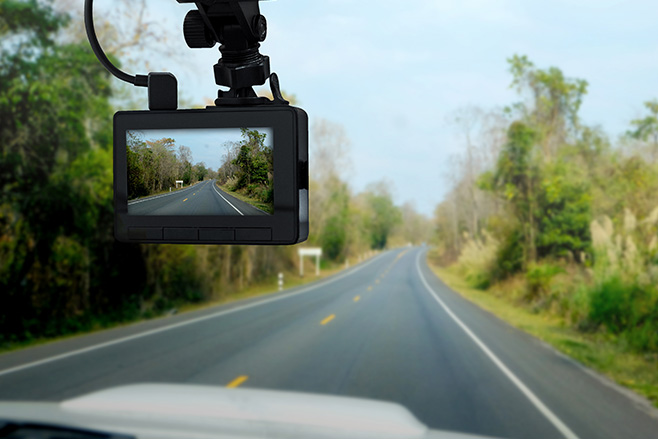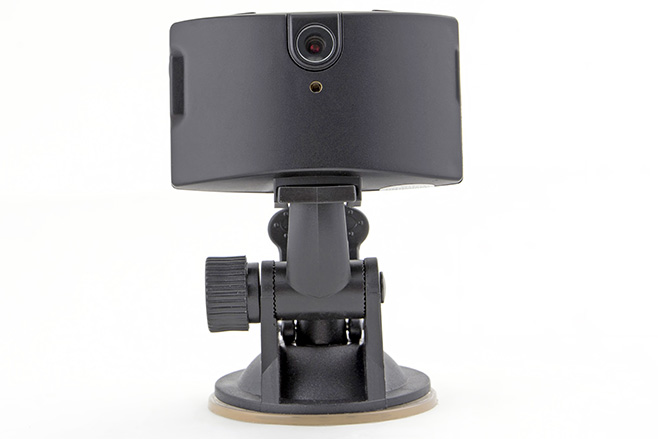
In what must rate as one of the worst pieces of acting since Nicole Kidman starred in Australia, a young man has been caught on dash cam in Adelaide attempting to fake his own demise.
The boy dramatically bumps into the front of a car, before rolling off and clutching his stomach as his mates hove into view.
Two problems; the car was equipped with a dash cam, and it was stationary. Double fail, buddy.
The car’s owner has told news services that he took the footage to local police, who allegedly dismissed the claim because no one had been injured.
While the footage itself is more amusing than troubling, it does highlight the fact that insurance scams are still alive and well, but the rise of the on-board dash cam is helping the everyday driver to protect themselves from being targeted.
According to data from the Insurance Council of Australia, around seven percent of drivers on our roads already have dash cams installed, and a further 13 percent plan to install them within the next 12 to 24 months.
“Dash cam footage has proven to be useful in uncovering fraudulent and exaggerated claims, and in some parts of the world and Australia where staged accidents are becoming quite common, those cameras are proving invaluable,” Campbell Fuller, head of communication at the Insurance Council of Australia, told WhichCar.
“There have been incidents captured in Australia where cars have been seen overtaking vehicles then ramming on their brakes to cause an accident, and there’s plenty of footage around of people on mopeds ramming cars and then rolling across the bonnet to fake a claim, and that’s where dash cams are certainly proving valuable.”

While it’s not common-place yet, a few car manufacturers are making provisions for dash cams in the design of new vehicles; Citroen’s C3 was the first car in Australia to be able to be optioned with a built-in dash cam.
Fuller said that the insurance industry doesn’t have a view on whether dash cams should become a standard addition to cars, but points to the fact that vision from cameras is increasingly being used as evidence.
“Of course that evidence can be used two ways,” he pointed out. “If you have a dash cam and you are at fault, then that evidence can be used by police, and insurers might also seek access to that footage.”
Insurance fraud is a worldwide problem, and Australia isn’t immune to the rise of increasingly more sophisticated ways of rorting the system. There are more than $2 billion in fraudulent and exaggerated claims across all insurances in Australia every year, and this figure doesn’t include compulsory third party (CTP) fraud.
“In states where you have at-fault schemes where compensation is paid to injured road users, does depend on who caused the accident, and fraud is rife,” said Fuller, who added that there are changes being made to stamp out this practice.
“In NSW, fraud has just about been driven out of the system with recent changes to CTP, and other jurisdictions including Queensland are also looking at how to drive fraud out of the system, because it’s had an incredible impact on the cost of premiums.”
The changes revolve around moving to a defined benefit system that’s focused on rehabilitation rather than a straight cash payment.
“Relatively minor injuries aren’t defined through a fault-based mechanism,” he said. “So there’s no incentive for fraud. Because it’s a defined benefit, to incentive to fake or exaggerate claims has been largely driven out of the market in NSW and other jurisdictions.”
In the example of old mate rolling over the bonnet, Fuller suggested that there could even be a more sinister motive behind the faking of an injury.“It could even be about blackmailing the driver,” he said. “They could come back directly to the driver seeking compensation, with all sorts of threats involved. Police will tell you, though, that this does occur.”
So, does a dash cam mean that your insurance premium will be lower? Sadly, no.
“In general terms, the advent of dash cams is assisting motorists to be able to apportion blame in the instance of a collision, and reduces the impact of making a claim on their own insurance premiums,” explained Fuller.

“Part of making a claim is being able to apportion blame and responsibility but it’s up to individual insurance providers as to whether the use of on-board camera footage can be used to support an insurance claim,” Fuller explained
“However, insurers don’t factor in dash cams into policy pricing, because actually having the dash cam doesn’t reduce the risk of something unexpected happening that can lead to a claim. Anything that lowers the risk of a claim is what goes into a policy; having a camera doesn’t lower the risk.”
There are upsides to more cameras being used across the streets of Australia, though.
“It reduces the inflationary pressures on motor vehicle insurance and it also offers people a little bit of peace of mind that if they are involved, and that they are a safe driver who have followed the rules and done the right thing, then being able to apportion blame is a good thing,” said Fuller.
“It’s not just about insurance – it’s about law enforcement. If someone is injured, police are required to attend and they will be looking at all available evidence to determine blame and to potentially lay charges. If you have that evidence, then in many cases you improve your chances of not facing court action or fines or prosecution following a collision.”



